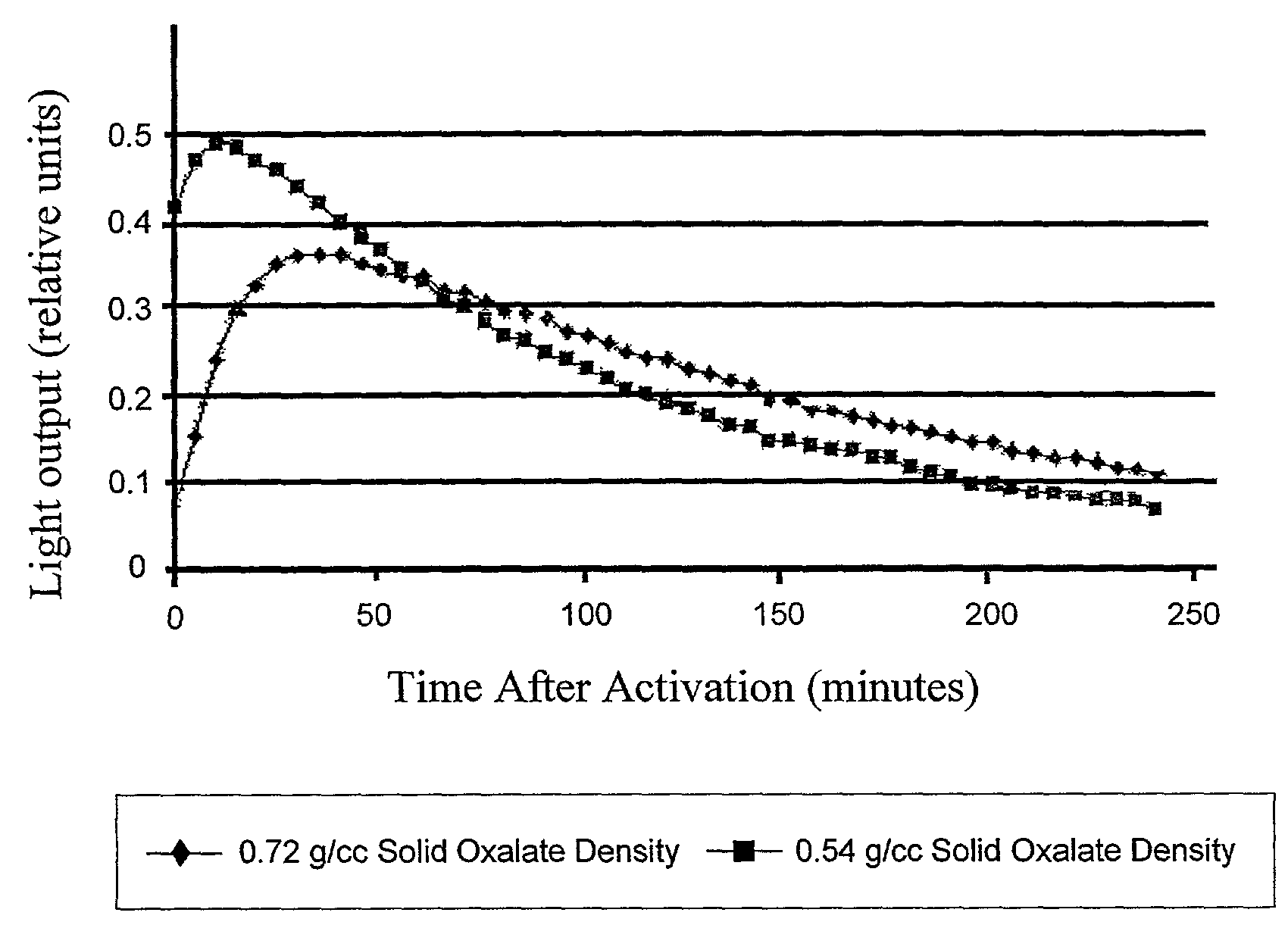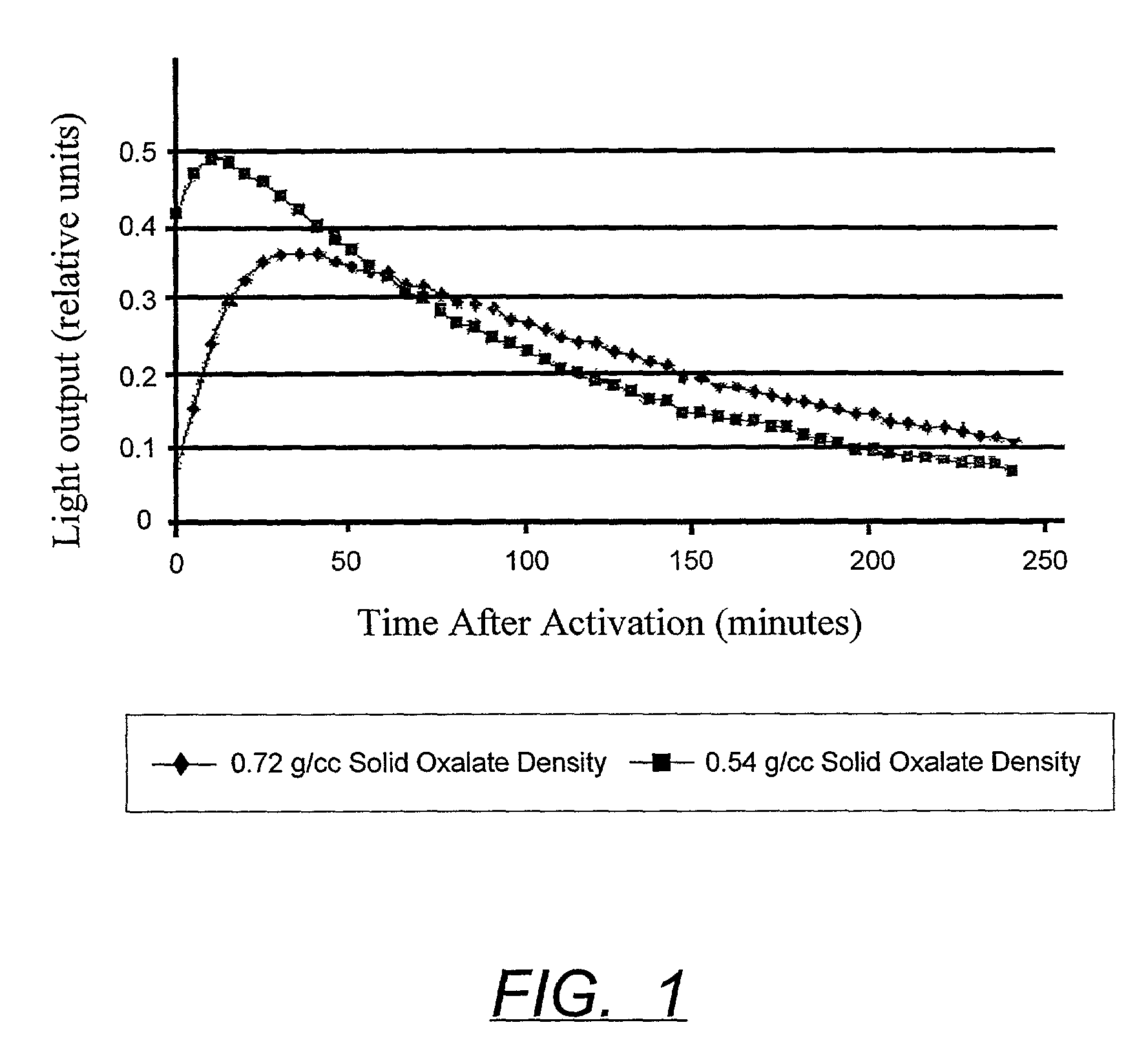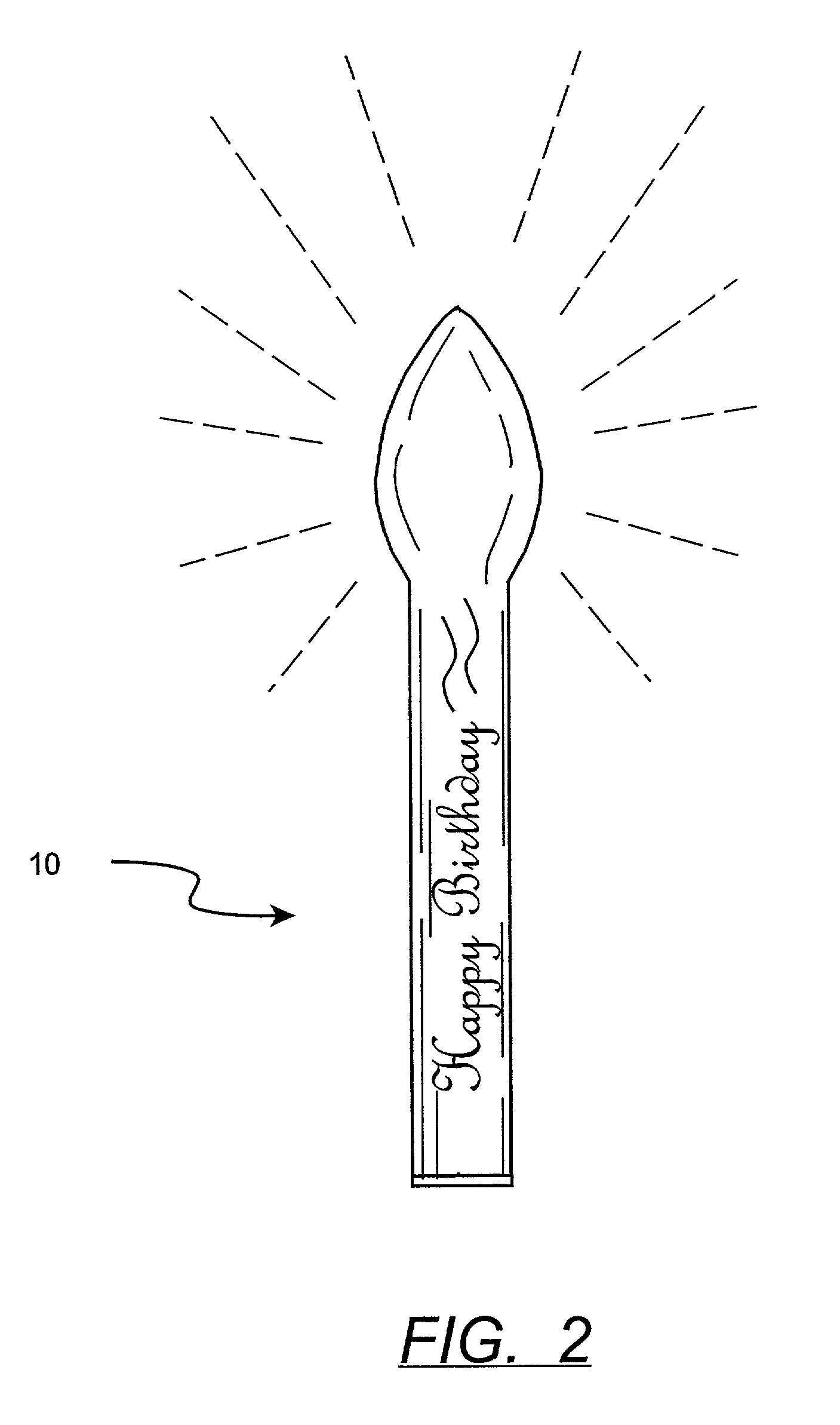Formable, porous, chemiluminescent reactant composition and device therefor
a technology of chemiluminescent and reactant composition, which is applied in the field of chemiluminescent compositions, can solve the problems of limited to a two-dimensional surface, limited to producing a single color of light per device, and difficult to rapidly and completely activate the oxalate in the tubing
- Summary
- Abstract
- Description
- Claims
- Application Information
AI Technical Summary
Benefits of technology
Problems solved by technology
Method used
Image
Examples
examples 1-6
[0056]Six tests were conducted to determine the effects of varying cure times and temperatures as well as slurry thickness on porosity. In each test, approximately 7 grams of liquid slurry was placed in a small aluminum weighing pan which was then positioned on a spacer such that the pan bottom was slightly inclined to create a slurry having a depth ranging from 0.015″ to 0.180″. During each test, the pan was placed on a wire rack in a circulating air oven. After curing for the specified time, each sample item was removed from the pan, sectioned, and examined for proper curing and porosity. A properly cured sample is defined as one in which all of the oxalate solution had been absorbed into the PVC matrix, and which does not exhibit signs of over-curing. In a properly cured matrix, the lower molecular weight PVC particles fuse together. However, the higher molecular weight PVC particles, while absorbing the liquid oxalate solution, do not significantly fuse together. If the curing t...
example 7
[0061]A chemiluminescent candle was produced using the same liquid slurry formation as that used in tests 1-6 above. To make this candle, approximately 3.2 grams of liquid slurry was injected into a polyethylene candle envelope using a syringe. A glass ampoule containing chemiluminescent activator was inserted into this slurry such that the lower end of the ampoule contacted the inside bottom of the candle envelope. The assembly was placed in a circulating air oven set for 82° C. and allowed to cure for 12 minutes. After removal, the assembly was allowed to cool to room temperature whereupon the candle envelope and cured slurry were sectioned for observation. The PVC matrix (cured slurry) appeared to be fully cured, but was dark and dense. The PVC matrix portions were removed from the envelope and placed in an aluminum weighing pan. Chemiluminescent activator reagent was added to these portions whereupon the cured slurry glowed dimly. It was observed that the activator was reacting ...
example 8
[0062]With these results in mind, an aliquot of slurry was supported upon an air permeable substrate, e.g. a 10 cm by 10 cm section of 2 mm thick non-woven polyester felt and placed in a circulating air oven, maintained at 82° C., for 8 minutes. The expectation was that the felt would provide uniform access of air to the slurry and that heat would cure the slurry from the outside in such a manner that no dark, non-porous regions would be formed as had been the case in slurry previously cured in the impermeable aluminum pans. As each successive layer of the slurry cured from the outside in, it would become porous, thereby allowing air to reach subsequent layers. This sample was removed from the oven and allowed to cool. Upon inspection, it was noted that the pad had no dark or dense areas and was extremely porous. The sample was activated with chemiluminescent activator reagent whereupon the sample glowed brightly and evenly throughout its entirety.
[0063]A model which explains the fo...
PUM
| Property | Measurement | Unit |
|---|---|---|
| Particle size | aaaaa | aaaaa |
| Composition | aaaaa | aaaaa |
| Color | aaaaa | aaaaa |
Abstract
Description
Claims
Application Information
 Login to View More
Login to View More - R&D
- Intellectual Property
- Life Sciences
- Materials
- Tech Scout
- Unparalleled Data Quality
- Higher Quality Content
- 60% Fewer Hallucinations
Browse by: Latest US Patents, China's latest patents, Technical Efficacy Thesaurus, Application Domain, Technology Topic, Popular Technical Reports.
© 2025 PatSnap. All rights reserved.Legal|Privacy policy|Modern Slavery Act Transparency Statement|Sitemap|About US| Contact US: help@patsnap.com



